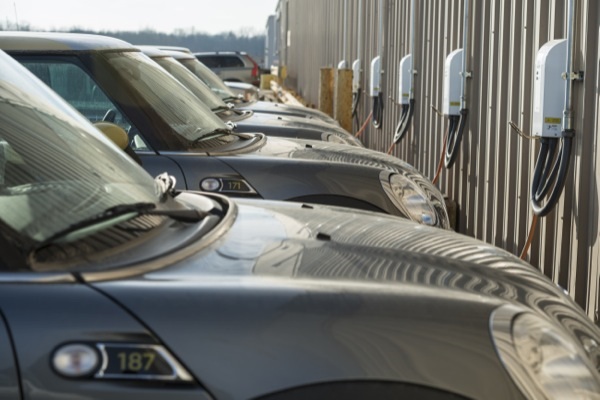There’s significant progress to report on an idea that could transform electric vehicles from a potential grid destabilizer to a helpful piece in the energy storage puzzle.
A joint venture between the University of Delaware and NRG Energy that aims to turn the EV-to-grid connection into a two-way street – with the fitting name eV2g – said that it has in recent months provided energy for the giant regional transmission organization PJM. The announcement came about a year and a half after the two parties formed their JV.

“This demonstrates that EVs can provide both mobility and stationary power while helping make the grid more resilient and ultimately generating revenue for electric vehicle owners,” Denise Wilson, an NRG executive vice president, said in a statement.
There are so many good reasons to pursue this concept it’s almost ridiculous.
First, there’s the fact that the electric grid often has to absorb random bursts of energy – and meet sudden surges in demand – in order to run smoothly. EVs, plugged into their chargers (and by extension to the grid) are a ready and waiting short-term energy depository and source.
Plus, more and more, renewables are contributing power to the grid, and they aren’t always doing so when the energy is needed. Where to put that surplus? You guessed it: EVs.
Meanwhile, there have been concerns expressed that EVs, should they flourish, could overtax the grid. Well, that wouldn’t be the case if, during the many hours of the day when EVs are parked, they’re not just drawing from the grid, but are giving back.
It’s a balancing act, the University of Delaware said:
For grid operators, the technology serves as an innovative new approach to energy storage. It has the potential to balance the power provided by intermittent renewable resources such as wind and solar. Energy storage, such as large-scale batteries or those in a fleet of vehicles, can take the wind’s power generated at night and store it to use when demand is higher.
To make this early-stage breakthrough, eV2g needed help from PJM, which coordinates the movement of wholesale electricity and whose territory has 60 million people in the 13 Mid-Atlantic states.
“PJM changed rules for participation in the regulation service market to decrease the minimum amount of power needed to participate and we implemented new rules that recognize and compensate faster, more accurately responding resources, such as batteries,” said Michael J. Kormos, senior vice president of PJM Operations.
Right now, to keep a very complicated undertaking as simple as possible, this is a fleet-focused program, not a commercial offering. But the long-term vision is to expand it to individual EV owners, who could see that expensive battery in their Tesla or Leaf or whatever (probably not Fisker) become a revenue source, earning money as it feeds energy back to the grid.